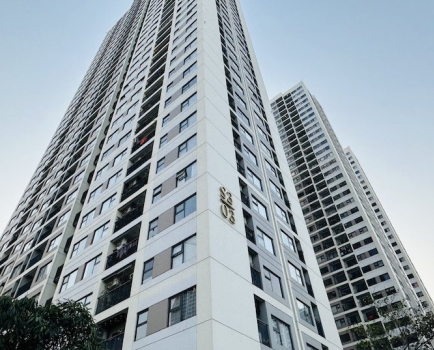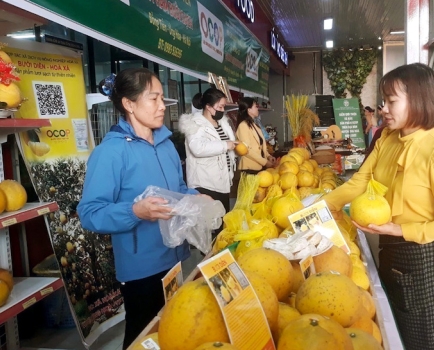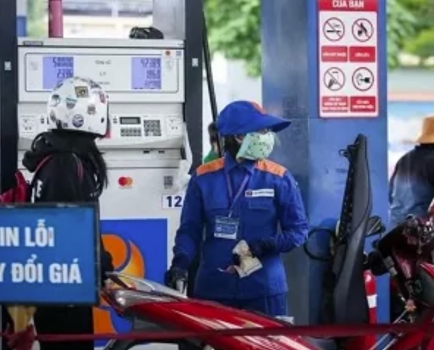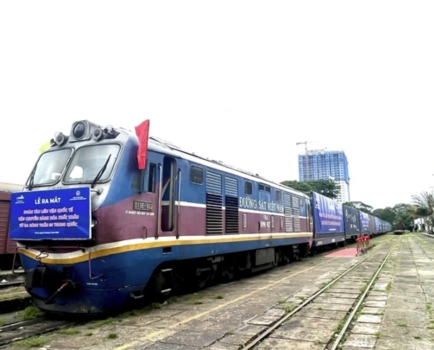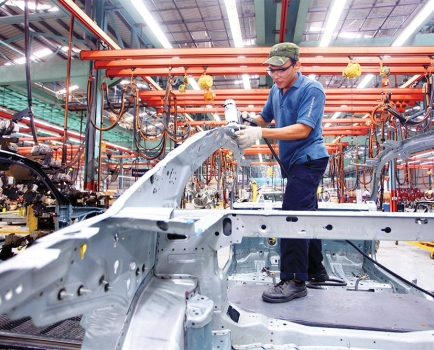Increasing Chinese FDI worries NA deputies
Thu, 13 Jun 2019 15:16:00 | Print | Email Share:
VOV.VN - National Assembly deputies have raised their concerns about the potential risks of soaring Chinese foreign direct investment inflows into Vietnam.
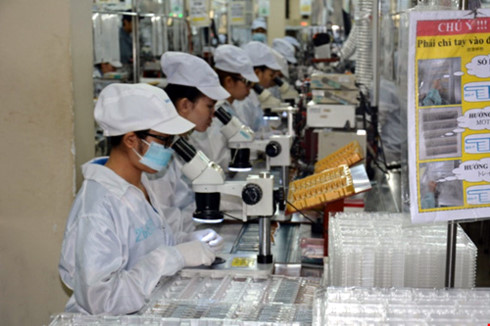
The majority of Chinese FDI has been poured into the manufacturing
and processing sector. (Illustrative photo: PLO)
The Foreign Investment Agency (FIA) under the Ministry of Planning and Investment reported that China surpassed Japan, the Republic of Korea, and Singapore to become the largest foreign investor in Vietnam over the first five months of 2019, with total foreign direct investment (FDI) amounting to US$7.6 billion.
The ever-increasing FDI from China could pose a risk of moving poor quality projects and out-of-date technologies to the Southeast Asian country along with the subsequent risks of environmental pollution.
The increase of FDI from China to other countries, including Vietnam, could put pressure on the capital recipients’ infrastructure. Chinese investors are forecast to increase the numbers of M&A and share purchase deals as a way of taking control of domestic firms.
Amid escalating US-China trade tensions, there is a high possibility that enterprises could seek ways of illegally relabeling goods of Chinese origin into made-in-Vietnam products in order to avoid US tariffs on Chinese imports, the Ministry of Planning and Investment has warned. This could put Vietnamese exporters at a disadvantage when shipping their goods to the US market.
NA deputy Le Cong Nhuong, who is also a member of the NA Committee for Science, Technology, and Environment, said the increasing Chinese FDI is a good sign for Vietnam but it is also fraught with a number of unpredictable risks.
Nhuong said the soaring Chinese FDI could be partly attributed to the plan of Chinese firms to shift their production bases to other countries, including Vietnam, in order to avoid additional US tariffs levied on their goods.
He urged the need to clarify the disbursement ratio of the five-month Chinese FDI which increased by 4.5 times on year and ask for a commitment by Chinese investors to guaranteeing the feasibility of their projects.
The sudden wave of Chinese FDI would result in both opportunities and challenges. The country could benefit from the investment wave if Chinese investors pledge to use only a small proportion of Chinese workers and experts whilst primarily hiring and training local laborers and experts.
Vietnam should not seek to attract FDI at any cost but should look to tighten control of the production technologies foreign investors use for their projects. This could also serve as a way of tackling the use of outdated technologies and risks of environmental pollution.
Truong Minh Hoang, deputy head of the NA deputy delegation from the southernmost province of Ca Mau, said that the production shift from China would help Vietnam to select capable investors. Despite this, he said, “we should prevent transfer pricing and tax avoidance of foreign investors.”
Vietnam needs to set higher standards in terms of environment, natural resources, technology, and product quality in accordance with regional and global levels. These standards would help to reject poor quality projects that potentially give threats to the environment.
The country should issue regulations on forbidding Vietnamese individuals and entities from representing and camouflaging the capital of foreign investors to pay for real estate transactions, Hoang suggested.
He added that tight control is urged for the lending between local individuals, organizations, and foreign entities in order to carry out property transactions.
He called for increasingly supervising the implementation of FDI projects after they are granted investment permits, with the aim of ensuring that they go ahead as committed.
Additional regulations should be applied to FDI projects in localities that hold a strategic position for national defence and security, the NA deputy noted.
The southern province of Tay Ninh has topped the nationwide list of Chinese FDI receivers, with 13 projects valued US$514 million in total. It is followed by the southern province of Tien Giang which has attracted the Chinese investment of US$360 million.
The majority of Chinese FDI has been poured into the local manufacturing and processing sector.
By: VOV
---------------------------------------------
Same category News :




